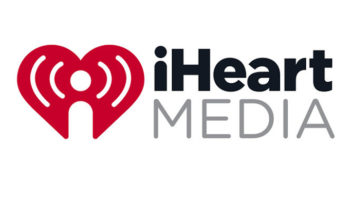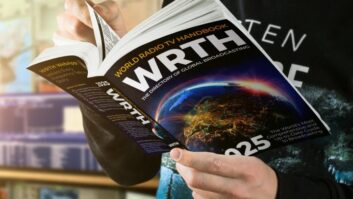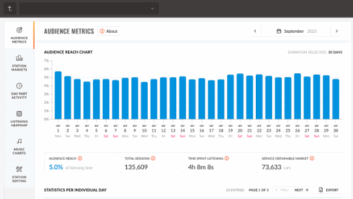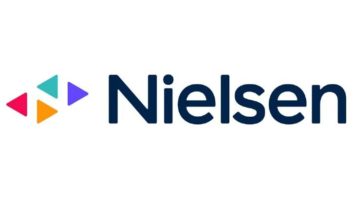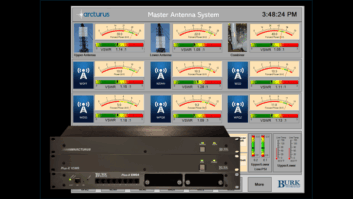
Paul Brenner speaks during the NAB Show about “Radio Done Differently: Delivering Data Attribution to Advertisers.”Paul Brenner, president of NextRadio, spoke at the spring NAB Show about the app and how stations can explain its appeal to advertisers. This text is based on a transcription of his remarks in the presentation “Radio Done Differently: Delivering Data Attribution to Advertisers.”
NextRadio is an app for a smartphone with an FM tuner enabled. Earbuds work as the antenna. It is not IP streaming, it is local broadcast radio. The magic, our secret sauce, is the imagery and visuals that match with what the listener is hearing. The picture on the screen shows the song that aligns with the FM audio being listened to on that station. Providing a visual with the on-air spot allows advertisers to now measure radio and track the value of that broadcast message down to data attribution levels.
Broadcasters can provide their advertisers with a synchronous companion ad. How it essentially works is every time the commercial is played on a local radio station, anyone that is using the NextRadio App with their FM-enabled smartphone sees the image and call to action aligned with what they are hearing. This display allows consumers to visualize the on-air radio spot.
What does radio creative do typically to get the listener to engage with their advertisers? They verbally ask listeners to visit a website, call a number, direct response. The station gives information about a sale. They tell the nearest location to visit locally or for national brands.
So what NextRadio has done is essentially create visual, click-through shortcuts in the app that you, the broadcaster, if you’re part of the Tagstation platform, can now offer to your advertisers. And all of this can be tracked to share with the advertiser.
PROOF OF PERFORMANCE
So let’s talk about radio measurement for a little bit.
The radio industry can now measure engagement with the listener. Reports for advertisers can be used to show the census-based demographic data about listeners. This is not sample data, this is census data from 7 million downloads covering every market in the United States and sharing what exactly your advertiser is getting, the benefit they are getting from radio. Who can say “proof of performance” better than that, right?
So we have listener engagement, we have demographic data; and because it is a smartphone we have the exact location of a listener.
Why is that important? We traveled around and talked to carriers, handset makers, record labels, advertisers, agencies and different people that have interest in radio’s future as an advertiser. This is the story we tell and it resonates.
Everyone in radio understands the reach of radio. So what we do is take that audio you hear and we enhance it with content, which grows the engagement rate by four times. People listen four times longer to local radio when you put engaging enhanced content in front of them and present them with an associated call to action. And for everything they do in NextRadio, we measure it.
We create this near-real-time reporting aspect that if at the end of the day, if you’re standing there talking with Home Depot, Burger King, Allstate or Comcast or your local advertiser, you will find out that this kind of information is what they want. They want to know that their radio commercial buy ultimately ends up in a data-driven decision.
That is what we often pitch and often get the most positive response on — how we convert the mass-market reach of radio down to a functional report of exactly how many people you reach that made a difference.
I mentioned that we go around to the record labels, advertiser and agencies and we tell this story. And to be blunt, some of the largest radio advertisers in this country would tell you, if you sat across the table with this topic in your hand, they would tell you that this solves the single largest problem facing radio in the future.
Yes, we have created a platform that brings portability, increases listening and gives the listeners something new. But it also gives the radio broadcaster something more powerful, a new tool that empowers you to measure the listener yourself. And it empowers you to engage with them in a new way that ultimately you can use for your own music programming decisions, ad sales and promotional tools. You can do all of those things yourself.
That is what our platform is built for, and why the NAB has supported NextRadio since inception. As broadcasters ourselves, Emmis Communications owns NextRadio, we are doing this because we want our radio industry to succeed. So this is about the radio broadcasters.
A few things we are doing with the measurement now are things like plays, listens, views and interactions. But also for a particular song are reports on the listener genre, by call sign, which city performed better, what daypart, what hour, what part of the hour got the most results when you’re commercial played. All of those are things we can deliver to advertisers and that we have delivered. We then convert that information. We match up a Google AdID and a latitude and longitude; we trade data with powerful companies like Experian, NinthDecimal and others to turn this into something that tells a better story.
FIRST-TO-MARKET OPPORTUNITY
What NextRadio does is it brings portability back; it lets the consumer take it with them, which is what we see a lot of. They take FM radio with them out of their car again. They save battery life, they save data usage and they listen to live radio more often.
Which means listening to local live sports that may be blacked out on streaming; which means news and talk that’s not buffered; which means live radio is live again. What we are building is a solution that the radio industry in its entirety can benefit from — rich measurement of radio listening, interaction and data attribution reporting.
This is a first-to-market opportunity. When you go out in the marketplace and you’re talking to an advertiser or an agency where people have money to spend, you find they are always looking for ways to invest in things that are new and can provide data insights. We are giving them something new to try. Hopefully we convert them into always thinking about radio data attribution as a component of radio spot buying; that would be ideal. But for now we are coming in here as a first-to-market opportunity to help the radio industry grow and evolve.
